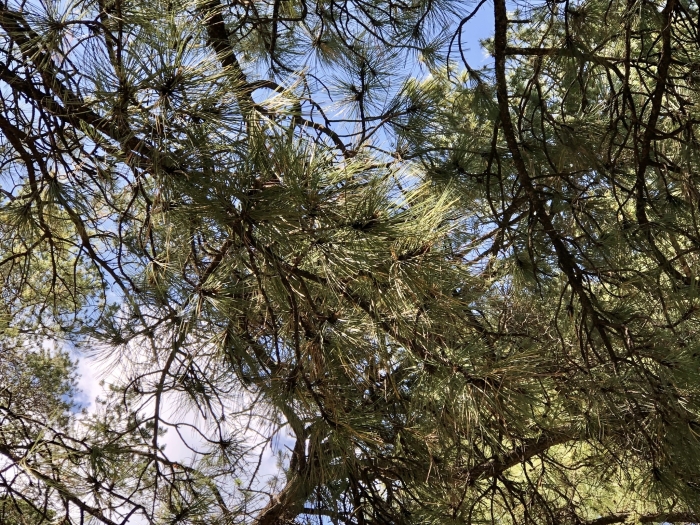Black Hills Ponderosa Pine
(Pinus ponderosa var. scopulorum)
Black Hills Ponderosa Pine (Pinus ponderosa var. scopulorum)
/
/

CK Kelly
CC BY 4.0
Image By:
CK Kelly
Recorded By:
Copyright:
CC BY 4.0
Copyright Notice:
Photo by: CK Kelly | License Type: CC BY 4.0 | License URL: http://creativecommons.org/licenses/by/4.0/ | Rights Holder: CK Kelly | Publisher: iNaturalist | Date Created: 2018-08-19T22:21:59Z |




















































Estimated Native Range
Summary
Pinus ponderosa var. scopulorum, commonly known as Black Hills Ponderosa Pine, is an evergreen tree native to the montane and foothill regions of the Rocky Mountains, extending from the Intermountain West through the Central United States. It typically reaches heights of 60-100 feet (18-30 meters) with a width of 25-30 feet (8-9 meters). This variety of Ponderosa Pine is characterized by a straight trunk, a conical to rounded crown, and thick, plate-like bark that can help protect it from fire. The needles are long and bundled in groups of two or three, with a rich green color. It produces cones that are three to six inches long. The tree is known for its resilience and adaptability, often growing in pure stands or mixed coniferous forests on a variety of soil types.
Black Hills Ponderosa Pine is valued for its hardiness and is often used in reforestation projects, as a windbreak, and for ornamental purposes in large landscapes. It is drought-tolerant once established, making it suitable for xeriscaping. The tree’s ability to thrive in a range of soil conditions, including rocky and sandy soils, makes it a versatile choice for gardeners. However, it can be susceptible to pine beetle infestations and diseases such as pine wilt. Gardeners should monitor for signs of stress or damage and manage pests accordingly. Despite its size, it is not known for having aggressive roots, but it should be given ample space to grow to its full potential.CC BY-SA 4.0
Black Hills Ponderosa Pine is valued for its hardiness and is often used in reforestation projects, as a windbreak, and for ornamental purposes in large landscapes. It is drought-tolerant once established, making it suitable for xeriscaping. The tree’s ability to thrive in a range of soil conditions, including rocky and sandy soils, makes it a versatile choice for gardeners. However, it can be susceptible to pine beetle infestations and diseases such as pine wilt. Gardeners should monitor for signs of stress or damage and manage pests accordingly. Despite its size, it is not known for having aggressive roots, but it should be given ample space to grow to its full potential.CC BY-SA 4.0
Plant Description
- Plant Type: Tree
- Height: 60-100 feet
- Width: 25-30 feet
- Growth Rate: Moderate
- Flower Color: N/A
- Flowering Season: Non-Flowering
- Leaf Retention: Evergreen
Growth Requirements
- Sun: Full Sun, Part Shade
- Water: Medium, High
- Drainage: Fast, Medium
Common Uses
Bee Garden, Bird Garden, Border Plant, Butterfly Garden, Deer Resistant, Drought Tolerant, Erosion Control, Fragrant, Low Maintenance, Rabbit Resistant
Natural Habitat
Montane and foothill regions of the Rocky Mountains
Other Names
Common Names: Ponderosa Pine , Rocky Mountain Ponderosa Pine , Interior Pondersosa Pine , Interior Ponderosa Pine , Mountain Ponderosa Pine , Pin Des Rocheuses , Pin Ponderosa Des Montagnes Rocheuses
Scientific Names: Pinus ponderosa var. scopulorum , Pinus ponderosa subsp. scopulorum , Pinus scopulorum , Pinus ponderosa subsp. brachyptera , Pinus brachyptera , Pinus ponderosa var. brachyptera , Pinus macrophylla
GBIF Accepted Name: Pinus ponderosa var. scopulorum Engelm.